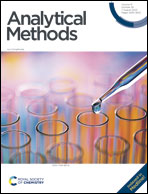Fabrication and application of a 3D-rGO electrochemical sensor for SO2 detection in ionic liquids
Abstract
Sulfur dioxide (SO2) is a common atmospheric pollutant. Currently, most of the detection methods are based on chemical reactions and optical absorption principles. However, these methods have some limitations in their detection range and accuracy, especially in complex environments. In this work, sulfur dioxide was absorbed by an ionic liquid, and a new electrochemical sensor based on 3D-rGO/CB was developed for electrochemical detection. Specifically, carbon black (CB) nanoparticles were incorporated with graphene oxide (GO) sheets using spray drying technology to form a highly porous and interconnected 3D-GO/CB microsphere structure. Then, the 3D-rGO/CB/GCE electrochemical sensor was fabricated by electrochemical reduction of the composite material onto a glassy carbon electrode (GCE) surface and used to detect sulfur dioxide in ionic liquids. The results demonstrated that the sensor had excellent conductivity and mass transfer preferable performance catalytic activity for SO2 in ionic liquids, and a linear detection range of 100–3500 ppm. Besides, the detection limit was 52.3 ppm (S/N = 3). Moreover, it had high selectivity, stability, and repeatability. This work significantly contributed to the development of advanced electrochemical sensors with improved performance for detecting SO2 in ionic liquids and has a potential application prospect in the field of electrochemical gas detection.



 Please wait while we load your content...
Please wait while we load your content...